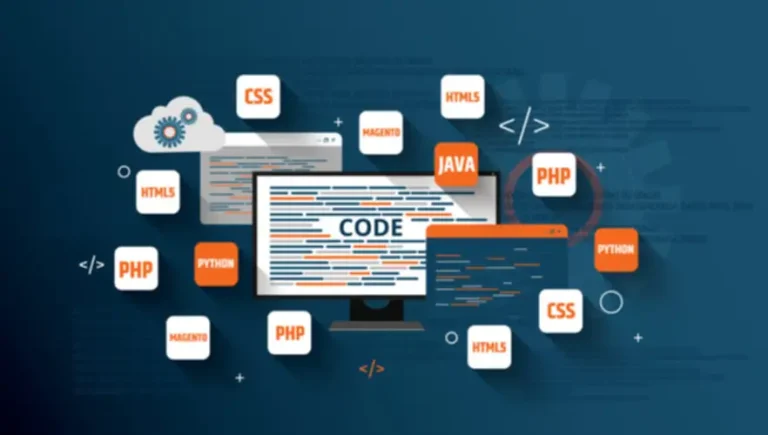For more info on tips on how to use Bitbucket Pipelines to automate your AWS deployment, take a look at this YouTube video tutorial. With over seven years of expertise, he excels in knowledge science, information integration, and data bitbucket pipeline services analysis, crafting engaging content material on these matters. Samuel holds a Bachelor’s degree in Computer Science from Lagos State University.
Introduction To Bitbucket Pipelines
If you’re on the lookout for a reliable solution to simplify your software program development process, this is a wonderful option. Quite simply, Bitbucket pipeline services provide groups with finest practices and methodologies for reaching their work goals while sustaining security and code high quality. Whenever you push your new code to the BitBucket repository, the Pipeline will unit test the code, construct a model new picture and push it to your Docker Hub. So BitBucket simply takes over the repetitive stuffs and frees you from the guide labor. From now on, you are encouraged to write down and commit more high quality code. The Bitbucket Pipelines insights feature Data Mesh is one other approach to optimize your pipeline.
Orchestrate Ci/cd Workflows At Scale
Bitbucket Pipelines is included as part of your Bitbucket Cloud plan. You only pay for supplemental construct minutes that go beyond the build minutes that are included in your plan every month. Get advice https://www.globalcloudteam.com/ from the Bitbucket team and different prospects on how to get started with Pipelines. Bitbucket Pipelines is quick to get started, simple to use, and scales to suit the needs of teams and organizations of any measurement.
Step 2: Establishing The Bitbucket Pipeline
- You can change the template at any time to vary the use case by opening the dropdown menu and deciding on another template.
- You can then press enter to simply accept the default location to retailer the keys, which will be a .ssh folder positioned within the house directory for that person (~/.ssh).
- Extreme programming (XP) adopted the idea of CI and did advocate integrating more than as quickly as per day — perhaps as many as tens of occasions per day.
- Scale on demand with our cloud runners, or connect to your own runners behind the firewall.
To embrace pipes in your Bitbucket pipeline, merely select the pipe you want to use, copy the code snippet of the pipe, and paste it into the editor. There are dozens of pipes available in Bitbucket, and you can see the entire listing by clicking Explore more pipes, as proven in the above image. By using Bitbucket Pipeline Trigger manually, you’ll have the ability to customise your CI/CD pipeline in order that some steps are only executed if they’re manually triggered. Deployment steps are good for this, as they require manual testing or checks before they run.
Plug And Play Throughout The Atlassian Platform

The “node” cache is used to cache the dependencies installed by npm. When the pipeline is run once more, the dependencies are loaded from the cache, which saves time. Store and manage your build configurations in a single YAML file.
The deployment step or stage will now present up within the deployments dashboard. The final part, defines a step to deploy the code to a test setting. The step in our instance doesn’t do an precise deployment but echoes the message “Deploying to check environment”.
In this article, we will take a look at tips on how to use Bitbucket Pipelines to create a quick CI/CD pipeline. Bitbucket Pipelines presents a robust and flexible CI/CD answer, seamlessly integrated with Bitbucket. Additionally, integrating with exterior monitoring providers and issue trackers enhances visibility and responsiveness to deployment adjustments. Bitbucket provides a big selection of companies to builders, such as allowing teams to collaborate and create initiatives, in addition to take a look at and deploy code in a single platform. Bitbucket Pipelines are a CI/CD service that is built into Bitbucket.
The benefit of a custom pipeline is that you could add or change the values of your variables briefly, for example, to add a model number or to supply a single-use worth. As a CI/CD service, Bitbucket Pipelines supplies builders with the ability to automatically build and check their code. Within the cloud, containers are created, and commands can be executed from inside them.
With Bitbucket Pipelines, you’ll be able to mechanically construct, test, and deploy your code each time you push updates to your repository. It’s configured using a YAML file (bitbucket-pipelines.yml) that lives in the root of your repository. This file defines the steps your pipeline will take, similar to putting in dependencies, working tests, and deploying your software. Bitbucket Pipelines is an integrated CI/CD service constructed into Bitbucket Cloud. It lets you mechanically build, check, and even deploy your code based mostly on a configuration file in your repository.
Add the deployment keyword to the step or stage, adopted by the name of the setting. The default Pipelines deployment environments are take a look at, staging, or manufacturing. You can configure Bitbucket Pipelines to replace issues in Jira based mostly on the outcomes of your builds or deployments.

The construct artifact or code goes via a series of checks and unit checks to establish issues early on. These checks occur early to supply quick suggestions to builders. You can use Bitbucket Pipelines to construct a sturdy and environment friendly CI/CD pipeline by leveraging the best practices and suggestions discussed in this article. Bitbucket Pipelines has every thing you need to automate your workflows and obtain your growth targets, whether you’re deploying to manufacturing, operating tests, or performing knowledge validation. As pipelines are triggered by commits, step one cannot be made manually. In the occasion a Bitbucket Pipeline Trigger manually must run manually, you might set up a custom pipeline.
To set off it, you’ll want to write down permission on the repository. By automating your team’s code, you save time by doing less manual work, and you decrease risk by following a consistent and repeatable course of. In the end, you spend less time dealing with emergency situations and extra time delivering quality code rapidly. Continuous integration (CI) is the practice of merging all developer working copies to a shared mainline several instances a day. Grady Booch first named and proposed CI in his 1991 technique, although he did not advocate integrating several instances a day. Extreme programming (XP) adopted the idea of CI and did advocate integrating greater than as soon as per day — maybe as many as tens of instances per day.
Inside these containers, you’ll find a way to run commands (like you might on a neighborhood machine) but with all the benefits of a contemporary system, custom-made and configured on your wants. A pipeline is outlined using a YAML file referred to as bitbucket-pipelines.yml, which is located on the root of your repository. For extra information on configuring a YAML file, discuss with Configure bitbucket-pipelines.yml. Bitbucket Pipelines, an integrated CI/CD service built within Bitbucket, provides a seamless way to automate your code from commit to deployment.
It’s this temporary server that is the shopper in this case, so it wants an figuring out SSH key pair so as to hook up with your server and run the instructions within the pipeline script. BitBucket expects to find Pipelines defined in YAML format in a bitbucket-pipelines.yml file in your local repository. These recordsdata can be created simply utilizing the BitBucket-provided templates for different languages and frameworks.
Custom variables may be defined, which can be utilized in the YAML file. The name of the variable must be typed in, along with its value; you possibly can encrypt it by clicking the secure box and clicking Add. Bitbucket will create the image repository for you if it doesn’t exist and then push the brand new picture inside (Figure 6. You can see from my model number that I truly have done some experiments 😉). Pipeline Viewer depicts your pipeline visually, making it simpler to identify bottlenecks and optimize your pipeline. Bitbucket Pipelines runs each job sequentially, one after the opposite, by default.









